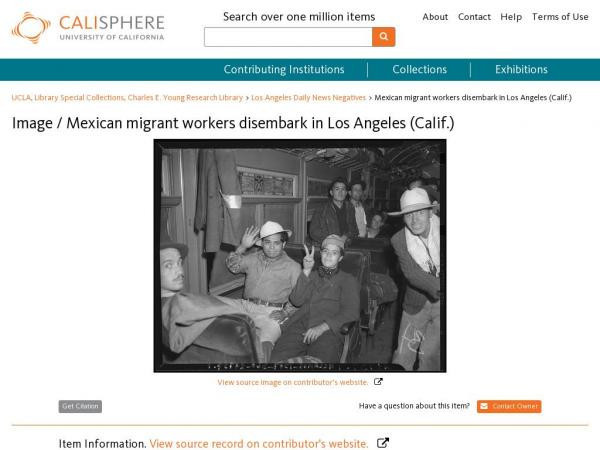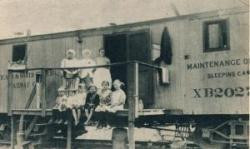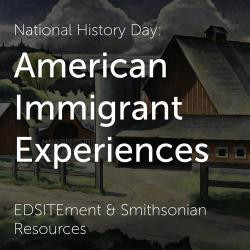Rubina Pantoja's collections
Chicano movement
<p>The theme of my collection is Chicano farm workers fighting for their rights. </p>
 Rubina Pantoja
Rubina Pantoja
5
The Bracero Program: Constructing a Narrative
<p>This assignment asks students to look at evidence and develop a narrative. Developed by UC Berkeley History-Social Science Project. </p>
 Rubina Pantoja
Rubina Pantoja
9
Asian American Modernism
<p>This collection is meant to build on two earlier collections, "<a href="https://learninglab.si.edu/collections/asian-american-art-emerging-from-the-shadows/gBfzCgh7FdF3mXNa#" target="_blank">Asian American Art: Emerging from the Shadows</a>" and "<a href="https://learninglab.si.edu/collections/asian-american-artists-and-world-war-ii/7hijKmJNXiFnjaKN#r" target="_blank">Asian American Artists and World War II</a>" and to introduce the viewer to artists of Asian ancestry in America using Chang, Johnson & Karlstrom's text, <em>Asian American Art: A History, 1850-1970</em> (2008), the Fine Arts Museums of San Francisco's exhibition catalog "Asian/American/Modern Art: Shifting Currents, 1900-1970" (2008),the vast resources of the Smithsonian Learning Lab, Project Zero's Global Thinking Routines and other resources. This collection is part two of four that I have organized, chronologically, on Asian American Art. The other three collections are "<a href="https://learninglab.si.edu/collections/asian-american-art-emerging-from-the-shadows/gBfzCgh7FdF3mXNa#" target="_blank">Asian American Art: Emerging from the Shadows</a>", "<a href="https://learninglab.si.edu/collections/asian-american-artists-and-world-war-ii/7hijKmJNXiFnjaKN#r" target="_blank">Asian American Artists and World War II</a>" and "Asian American Contemporary Art". It is my hope that these collections will serve as entry points to understanding the many contributions of Asian American artists in the U.S. from 1850 until the present time.</p>
<p>Visual art is a language that is socially and culturally constructed. Socially constructed learning values diverse perspectives, engages with local and global experts, and employs inquiry, discovery and exploration to move students toward global citizenship. Because the visual arts leverage the power of dialogue and debate to sharpen critical thinking, starting with the arts is a logical place to help students develop cultural intelligence.</p>
<p>Other purposes of these collections are to explore tangible and intangible cultural heritage; as well as jumpstart brave conversations about race, identity and immigration in the U.S. with teachers, tutors of English Language Learners and others who are interested in becoming cultural leaders in our public schools.</p>
<p>As Gordon H. Chang and Mark Dean Johnson state in the introduction of the exhibition catalog, "Asian/American/Modern Art: Shifting Currents, 1900-1970" (2008):</p>
<p>"Forty years ago there were no Asian Americans. There were Chinese, Japanese, Koreans, Filipinos, and others of Asian ancestry in the United States, but no 'Asian Americans,' as that term was coined only in 1968. This population was commonly seen as foreign, alien, not of America. Their lives and experiences were not generally accepted as part of the fabric of the country, even though Asians had begun settling here steadily in the mid-nineteenth century.</p>
<p>Then, in the late 1960s, as part of the upsurge in the self-assertion of marginalized communities, 'Asian America' emerged to challenge the stigma of perpetual foreignness. 'Asian American' was a claim of belonging, of rootedness, of pride and identity, and of history and community; it was also a recognition of distinctive cultural achievement" (Chang, Johnson, 2008).</p>
<p>#APA2018<br /></p>
 Rubina Pantoja
Rubina Pantoja
18
National History Day: American Immigrant Experiences
<p>This collection brings together <a href="https://edsitement.neh.gov/">EDSITEment</a> and Smithsonian resources to support the initial research into a project for National History Day. While originally created for the 2019 theme, "Triumph and Tragedy in History," resources found in this collection are useful for researching other National History Day themes. </p>
<p>These resources - including objects, documents, websites, and articles - reveal challenges and opportunities experienced by American immigrants in the 19th to mid-20th centuries. Resources highlight hardships that compelled people to leave their homelands, difficulties immigrants faced upon arrival, and ways they overcame obstacles to build new lives and communities in America. The second tile of this collection contains questions to help with the analysis of photograph, document, artwork, portrait, and object resources. </p>
<p>The history of immigration in America is an immense topic, and this collection addresses only aspects of it. Use this collection to brainstorm project topics, find connected resources, and as a launching point for further research.</p>
<p>This collection was created in collaboration with <a href="https://edsitement.neh.gov/">EDSITEment</a>, a website for K-12 educators from the National Endowment for the Humanities.</p>
<p>Share your National History Day collections and let us know what you think! Write to us on Twitter: <a href="https://twitter.com/EDSITEment">@EDSITEment</a> & <a href="https://twitter.com/smithsonianlab">@SmithsonianLab</a>, #NHD2019. If you publish a collection on your National History Day topic, be sure to enter #NHD2019 in the description!</p>
<p><em>Tags: 1800s, 1900s angel island, ellis island, immigration test, community, prejudice, irish, jewish, syrian, lebanese, arab, italian, mexican, german, greek, bohemian, czech, slovenian, know nothing, triangle shirtwaist factory fire, swedish, chinese exclusion act, japanese american incarceration, internment, bracero program, stories project, #NHD</em></p>
 Rubina Pantoja
Rubina Pantoja
128
Mexican Art & U.S. History: Carmen Lomas Garza
<p>This collection will provide an opportunity for students to analyze artwork, read background information, and connect art with historical events. At the heart of this activity is artwork created by Latino artist Carmen Lomas Garza. These paintings reflect the experiences of Garza's family and Latino life in 1980s America. In addition to image analysis, teachers could extend an opportunity for students to identify and discuss connections between Garza's art and the Mexican American experience from the 1960s to the present. This collection includes:</p>
<ul><li>A timeline of U.S.-Mexican American relations</li><li>Video/audio of Reagan signing the 1986 Immigration Reform Control Act</li><li>And an overview of immigration reform via ABC-CLIO (requires subscription). </li></ul><p>#ethnicstudies #LISDSS</p>
<p>Texas Essential Knowledge and Skills Connections #TEKS</p>
<p style="margin-left:0px;"></p>
<ul><li>24A describe how the characteristics of and issues in U.S. history have been reflected in various genres of art, music, film, and literature;</li></ul><p></p>
<p></p>
 Rubina Pantoja
Rubina Pantoja
24





